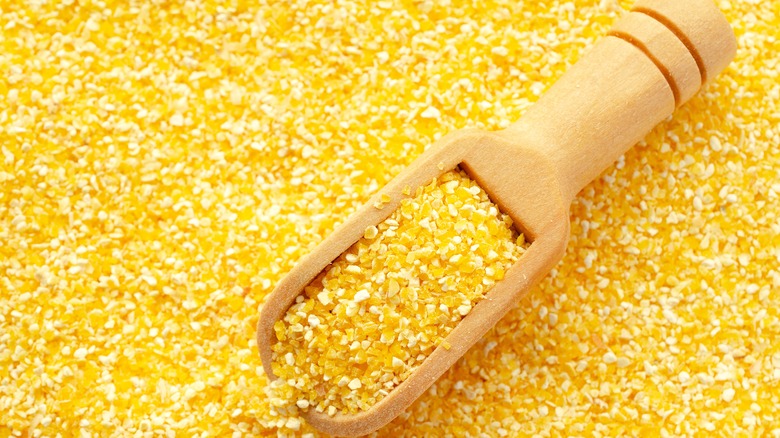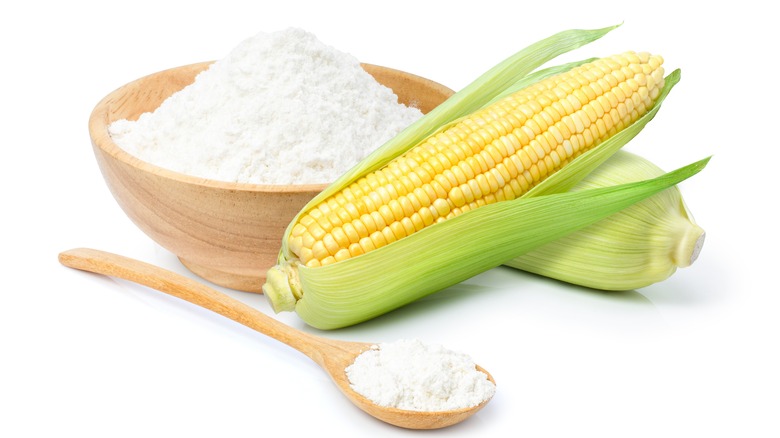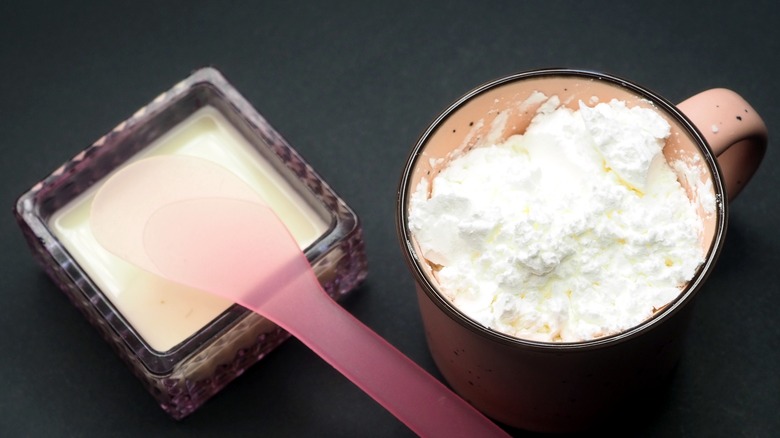Cornmeal Vs. Cornstarch: What's The Difference?
The world of cooking can be a little confusing sometimes. This is especially true if you are trying a new cuisine that involves ingredients that you are not entirely familiar with. To make matters worse, different products can have very similar names but be quite different in purposes or the results they will yield when used in a dish. Making matters even more confusing, the terms used to describe some ingredients can vary depending on where you live, says Substitute Cooking.
A classic example of this is cornmeal and cornstarch. While the names are much alike, and they both come from corn, you don't want to get them confused. Doing so could lead to some rather unpleasant surprises and ruin an otherwise delicious meal. Grainy sauces and dense loaves of bread are just two possible outcomes.
Have you ever had a nasty surprise when you got ingredients mixed up? Let's try to make sure that never happens with cornmeal and cornstarch.
Get to know cornmeal
For all practical purposes, cornmeal is nothing more than corn that has been dried and ground into a flour-like substance, via Boys and Girls Clubs of America. As we learn from GrowVeg, though, the subject is a little more complicated than it first appears. Not just any corn can be ground into cornmeal, and not all cornmeal is created equal.
The cornmeal we buy isn't made from traditional sweetcorn. Cornmeal is typically produced from dent corn, a variety of dried corn that farmers grow almost exclusively for meal or animal feed, per GrowVeg. It is never truly sweet or juicy like the sweet corn found on our dining tables.
Some of the more popular dishes that use cornmeal include cornbread, polenta, tortillas, and of course, using it as a breading for frying. It has a wonderful drying effect that creates a beautiful crust, says Substitute Cooking.
What is cornstarch
Cornstarch is an entirely different animal from cornmeal. According to a paper published by Corn Refiners Association, cornstarch has a history going back thousands of years and is used in many ways outside the kitchen. From modern textiles and drugs to ancient papyrus, cornstarch is very useful.
Unlike cornmeal, which is made from whole grain, cornstarch is made by extracting the pure starch from the endosperm of the corn, the soft inner part of the kernel, per Corn Refiners Association.
The primary purpose of cornstarch in the kitchen is as a thickening agent, per Healthline. But it is also helpful in creating smooth, crisp coatings on fried food, according to Fine Dining Lovers, who also points out cornstarch's usefulness in pie fillings and puddings.
One possible issue you must be careful of when cooking is paying attention to where your recipe originated. In the U.K. and other countries, people often refer to cornstarch as corn flour, according to My Favourite Pastime.


